18/1/2016. I barely recovered from being awestruck by the pyramids and sphinx before taking the train to Luxor. This was indeed where the ancient Egyptians of power thought about their mortality, dreamed of immortality. One after another, they kept coming—tombs, mortuaries, temples, statues, sculptures, hieroglyphics, wall paintings; some disfigured, some without an arm, and some a leg; some eroded, some reconstructed; some above ground and some had not seen daylight; some relocated, some stolen, some still sealed, doubtless more undiscovered.
We first drove to Valleys of the Kings. That is a euphemism for the graveyard. But it is thoroughly appropriate. This is where the ancient kings and powerful nobles between the 16th to the 11th centuries B.C. were buried. No photos were allowed in these tombs, only the hills above and around them. There are 63 of them, but we were allowed to visit only a couple. I had to go deep—actually, they were more than six feet underground. It was as though I had been invited into somebody’s living chambers; still vivid drawings adorned them. These are probably the only tombs I didn’t mind being in, dead or alive.
18/1/2016 吉萨看了金字塔和狮身人面像,目瞪口呆未了,搭上火车到卢克索。陵庙,陵墓,雕像,壁画,浮画,在这里竞相亮相;有残缺,也有修复的;有风采依旧的, 也有面目全非;有出土的, 也有还没见光日,有待发现的。 一早先到帝王谷;这里共有63座坟墓,是公元前十六到十一世纪法老王和其他权势贵族安息之地。我们只容许参观两座,不许拍照, 只拍到地貌。室内壁画和图案还清晰可见,我活着在九泉下参观,给自己那有朝一日一个心理准备;在这里安息,地点不错,只是没窗口,采光缺了点。
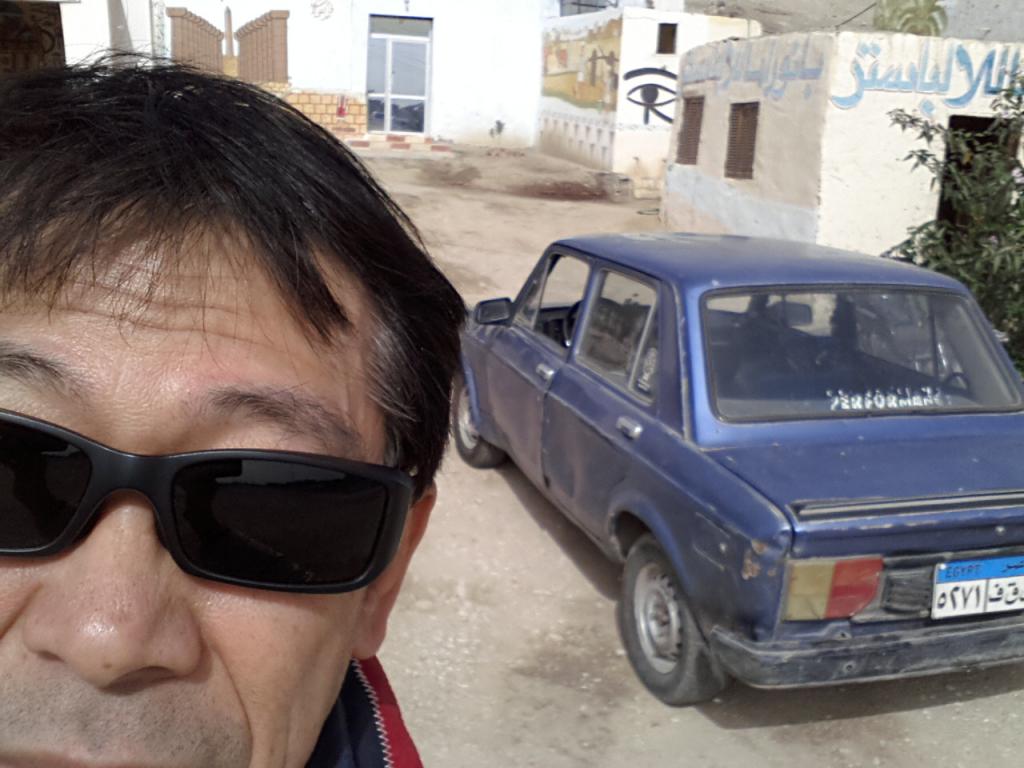
My tour car that is hardly roadworthy 我的老爷导游车 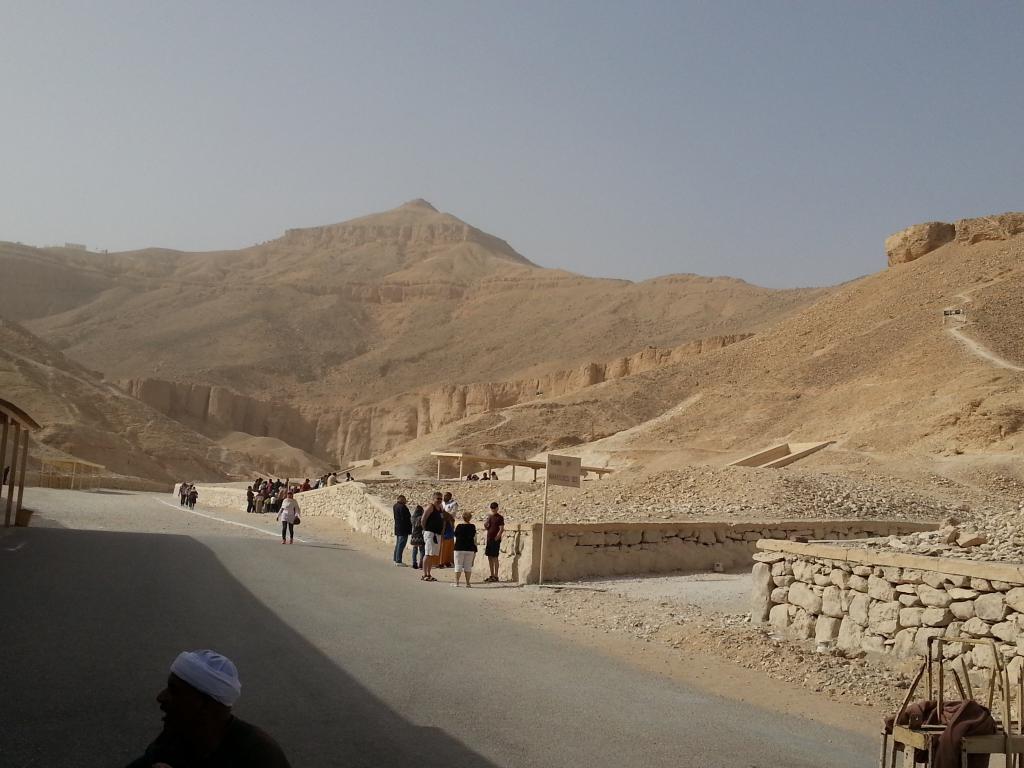
Valley of the Kings, Luxor 卢克索帝王谷
We then drove to the Mortuary Temple of Hatshepsut, built for the female Pharoah Hatshepsut in about the 15th century B.C. Against a backdrop of a spartan landscape, under a cliff, is etched this magnificent structure, almost camouflaged into the surrounding, yet protruding from it to show off its grandeur. The fat columns, granite statues, reliefs, and paintings that adorn them remain to this day. To be able to eyeball these that came from the world more than 3,500 years ago, it was easy to feel confused. Was I in the here and now, or back there and then?
接下来往哈齐普苏特陵庙,三千五百年前为古埃及女王所造; 镶在峭壁下,周围严峻的背景,富丽堂皇的气势,从峭壁脱颖而出;顶天立地的大石柱,石雕,和这些墙面的壁画和浮画,经过三千五百年的无情和动乱岁月,在眼前触手可及,眼前一切都是假象,是错觉。
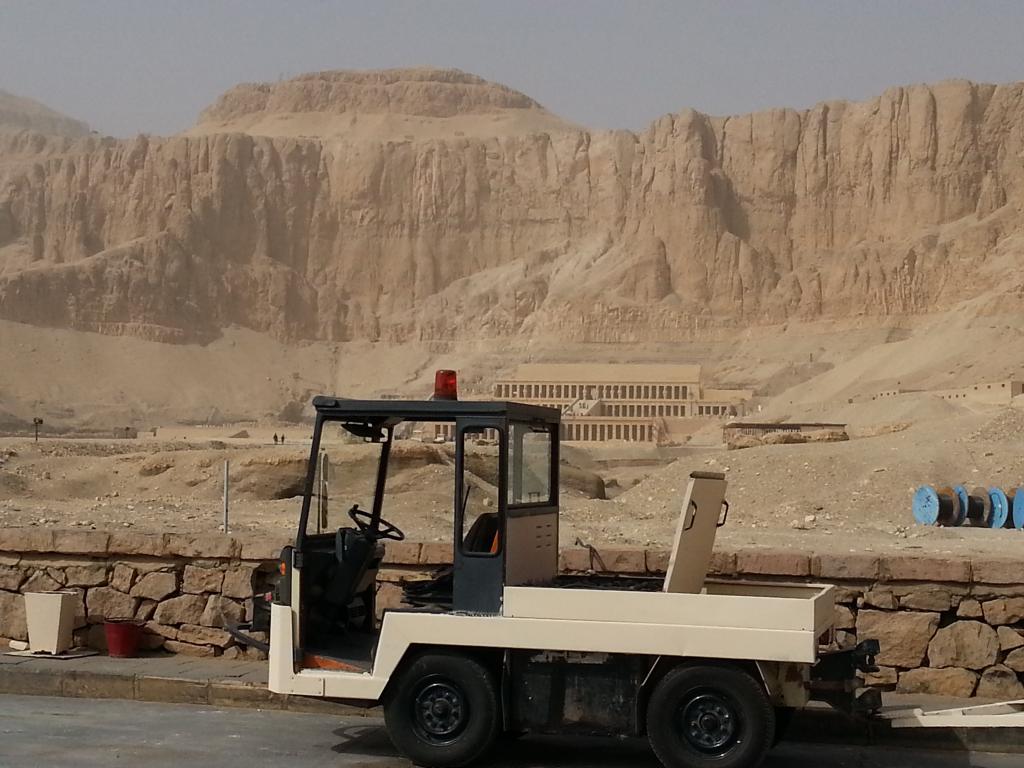
Mortuary Temple of Hatshepsut 哈特苏普斯特女王葬祭殿 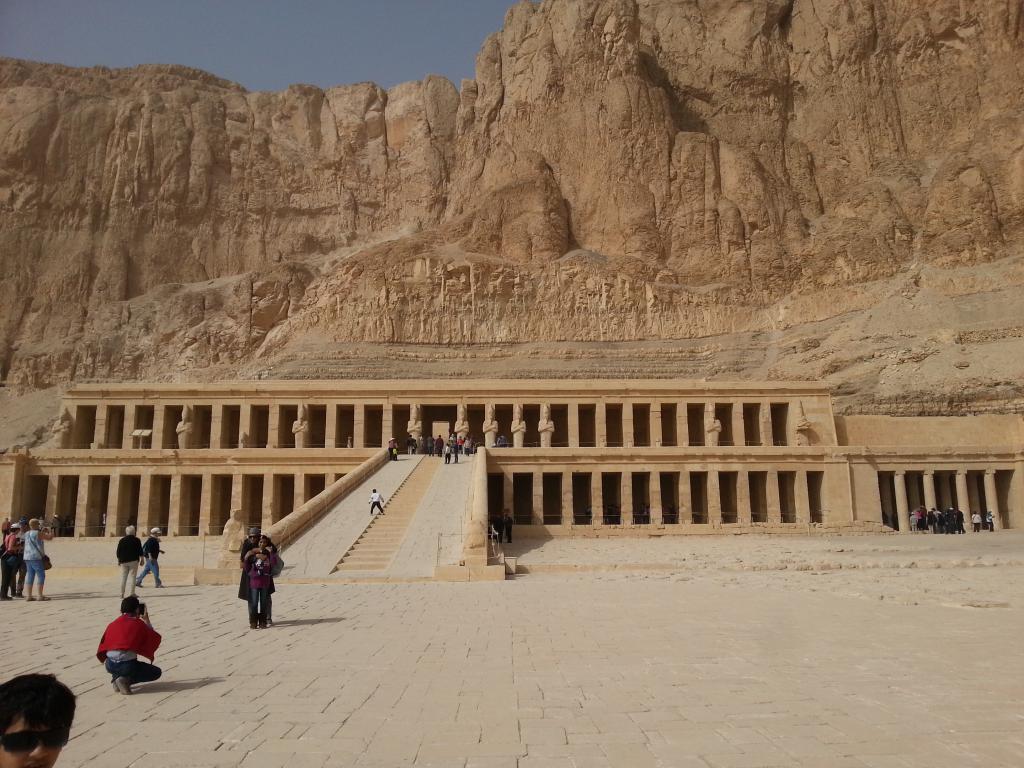
Mortuary Temple of Hatshepsut under the cliff 峭壁下的哈特苏普斯特女王葬祭殿 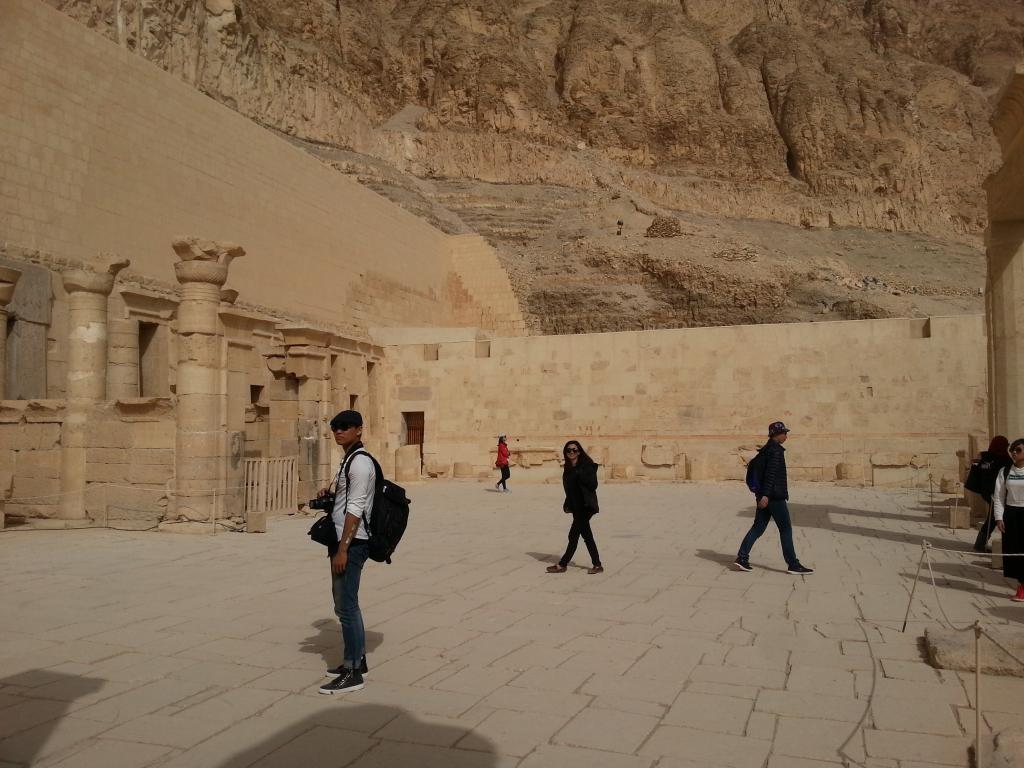
Courtyard in the Mortuary Temple of Hatshepsut 哈特苏普斯特女王葬祭殿庭院 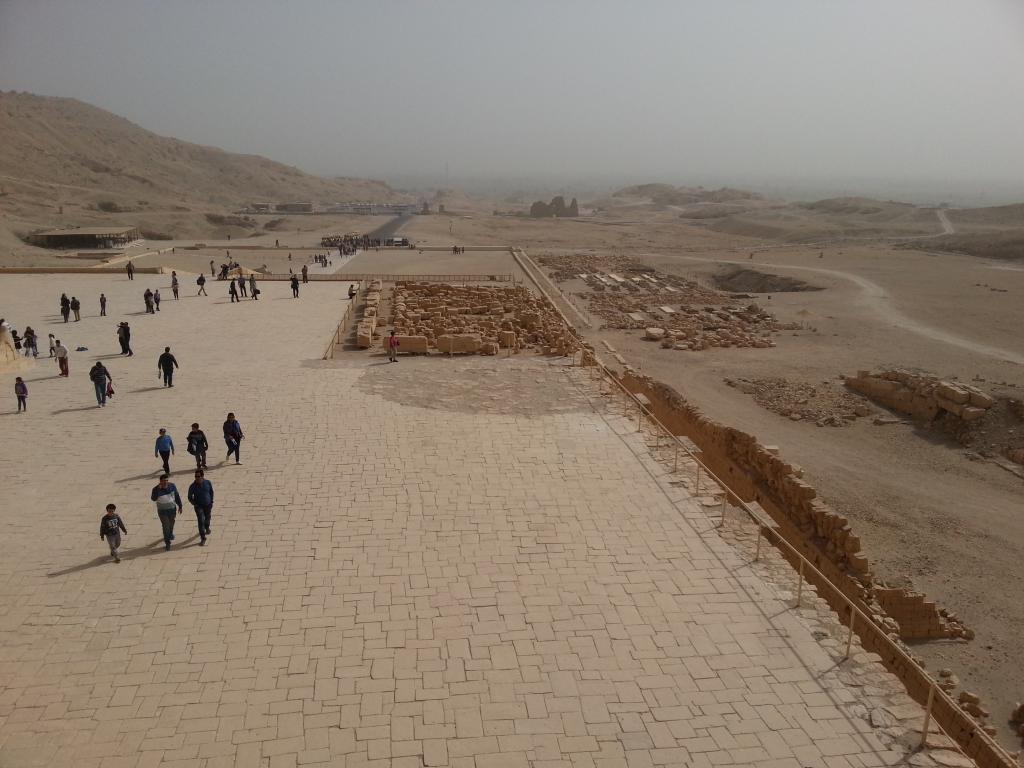
Front court of the Mortuary Temple of Hatshepsut 哈特苏普斯特女王葬祭殿前广场 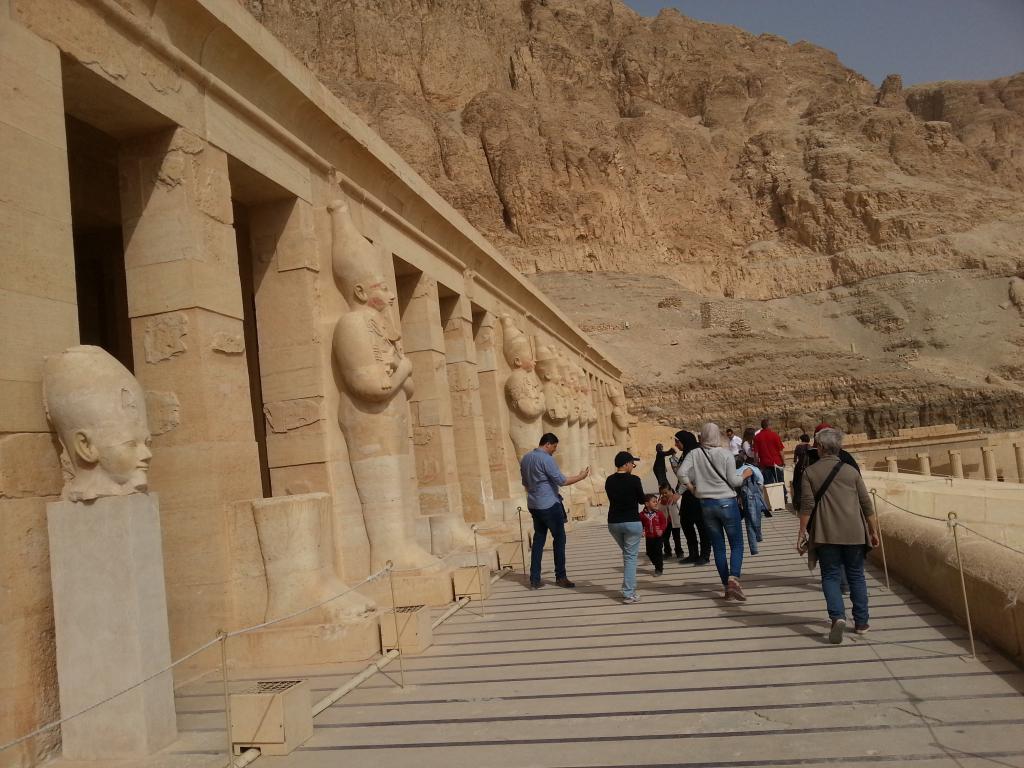
Row of Osiris statues in Mortuary Temple of Hatshepsut 哈特苏普斯特女王葬祭殿雕像 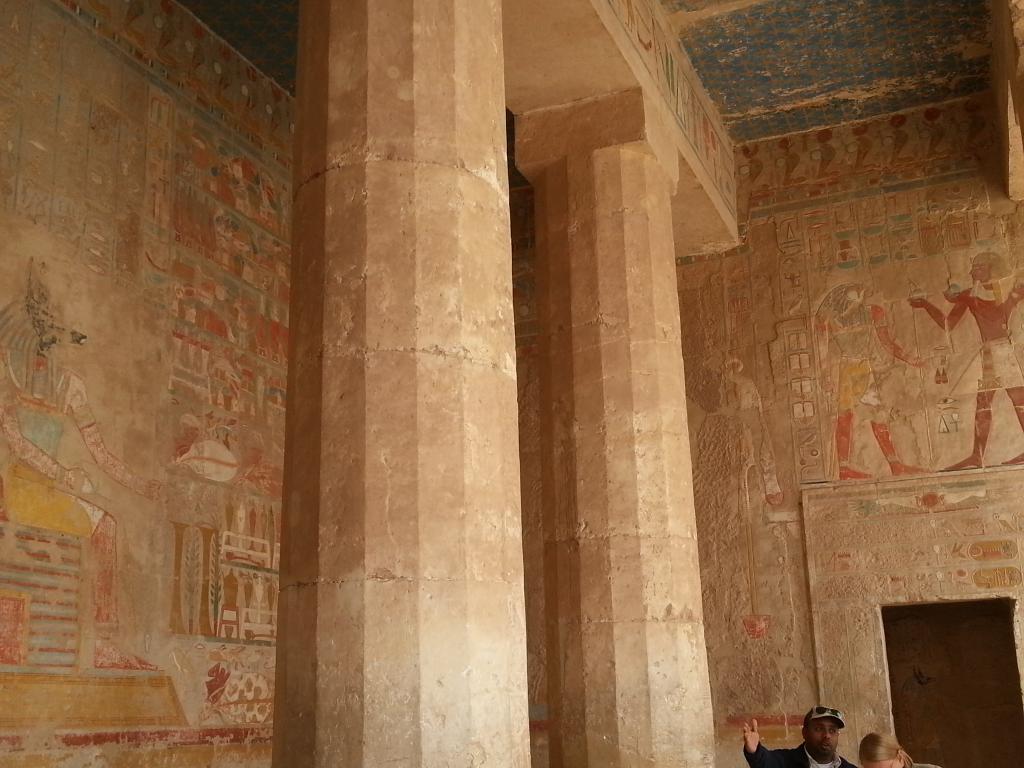
Giant pillars and wall painting in Mortuary Temple of Hatshepsut 哈特苏普斯特女王葬祭殿内大柱和壁画 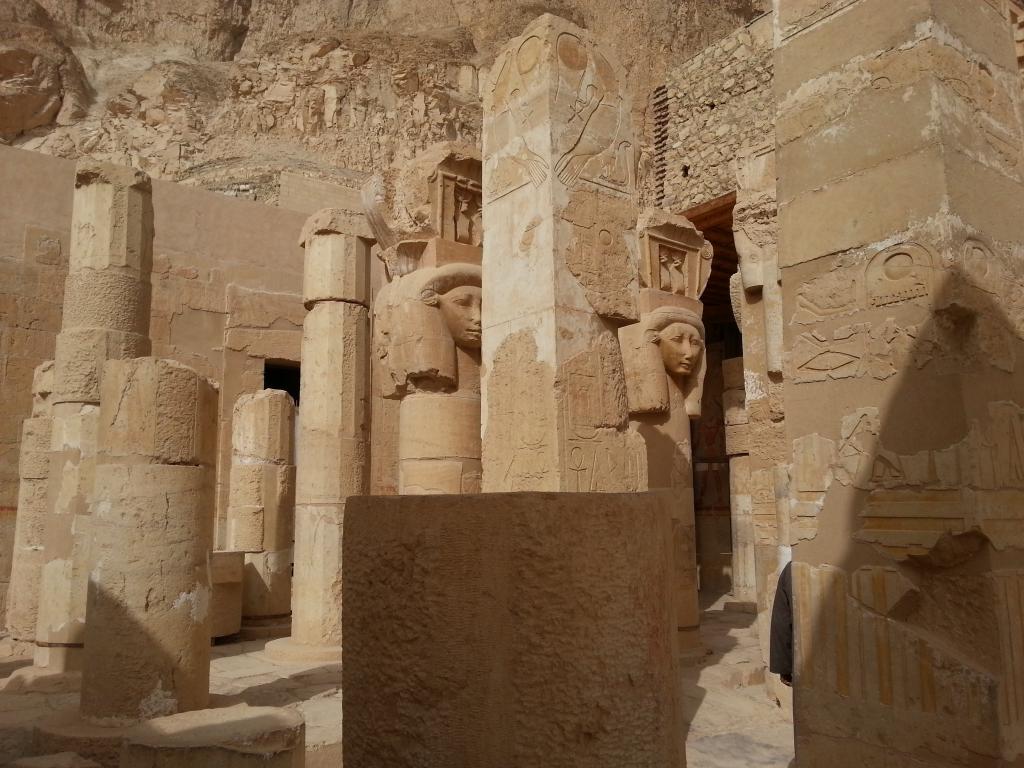
Hathor Chapel in Mortuary Temple of Hatshepsut 哈特苏普斯特女王葬祭殿 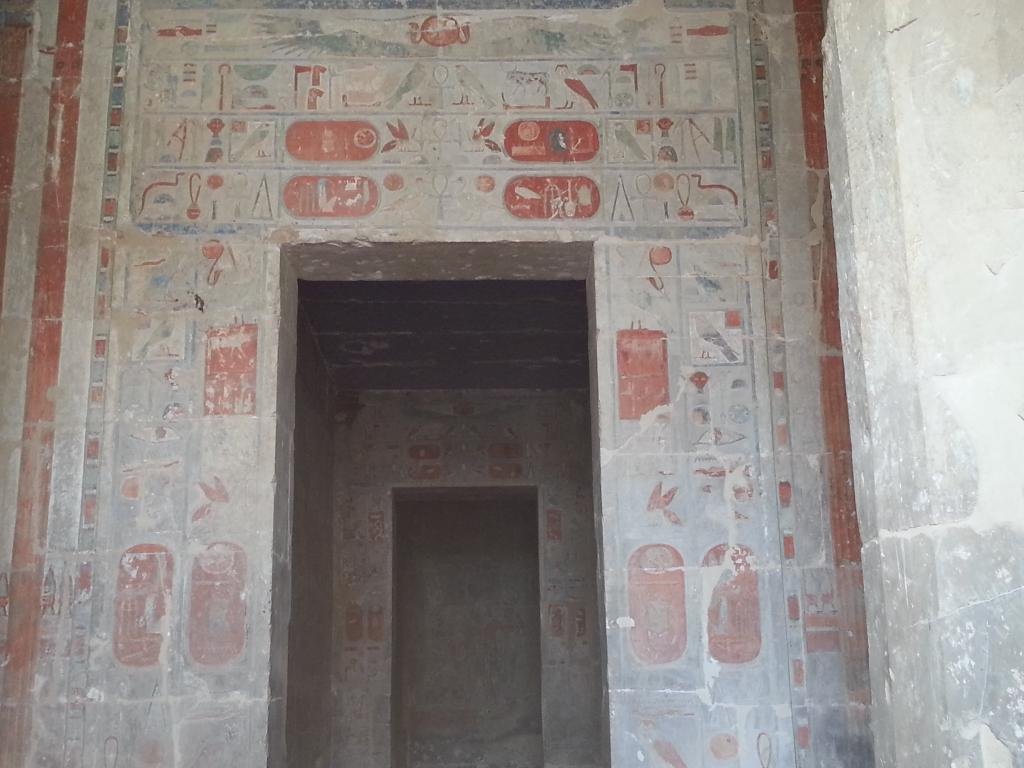
Fresco in Mortuary Temple of Hatshepsut 哈特苏普斯特女王葬祭殿壁画 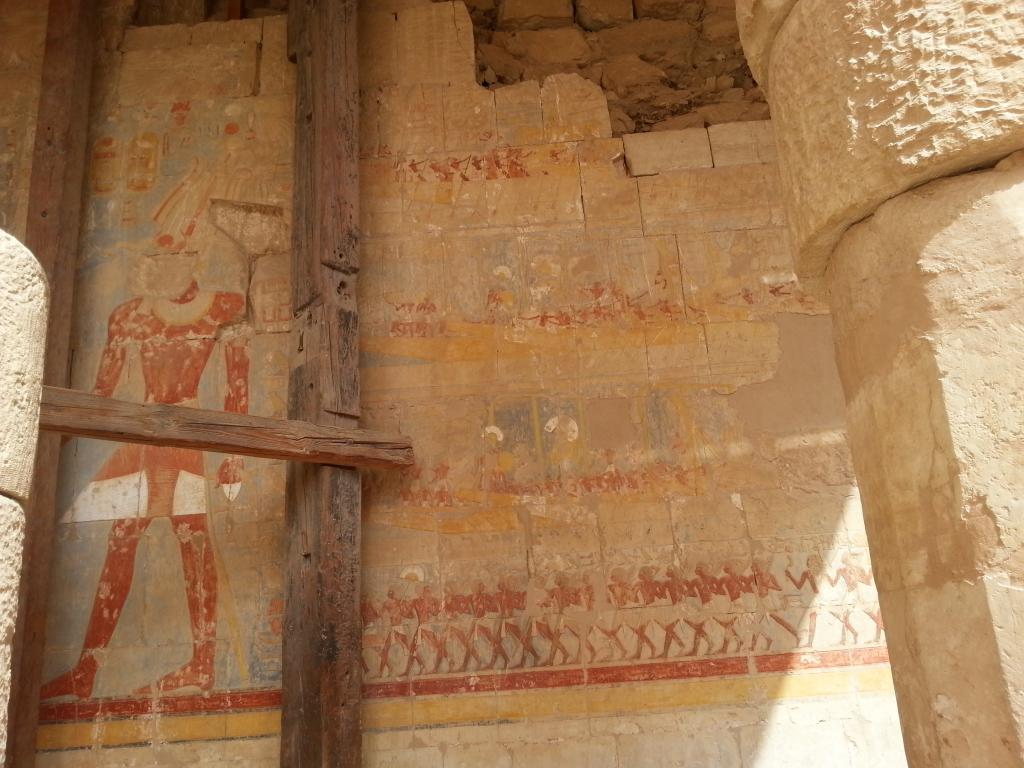
Wall paintings in Mortuary Temple of Hatshepsut 哈特苏普斯特女王葬祭殿壁画
Next, we came to Medina Habu Temple, built by Ramses III more than 3,000 years ago. This was another one of the structures that were worthy of the great kings it was built for. Walls, gates, paintings, reliefs, hieroglyphics, giant columns, and statues brought to life ancient scenes. I could only gawk at the magnificent structures before me, body and soul totally captivated and overwhelmed. The ancient air had not dissipated; all around here was as naturally rustic as it had been for the past thousands of years. My king was the Pharaoh. I have lived more than 3000 years, or my world has remained stuck in time for as long.
下一站到哈布陵庙,拉美西斯三世所造。这又是一个使人叹为观止的杰作。塔门,围墙,大石柱,花岗岩雕像,上下左右布满的壁画,浮画,古埃及象文,把历史重演;我看得瞠目结舌,神不附体,回到三千五百年前。这里四周环境还是那么原始,那蓝天从古至今不曾变色;拔地而起的结构还是那千古以来的黄土;壁画和象形文字为千年的语言,讲述三千多年前的故事;到处弥漫着古色古香,那古风经久不散。这当下,我的一国之君是法老王。尝尽古今中外,我别而无撼。
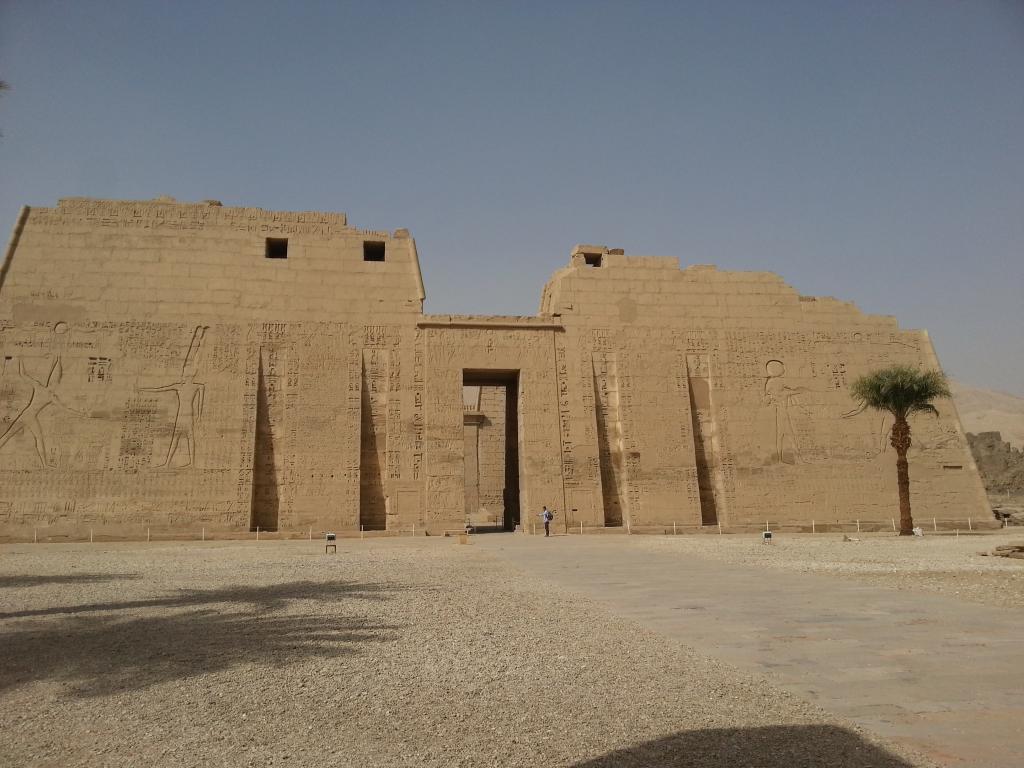
Medinet Habu Temple, first pylon and the forecourt 哈布陵庙第一塔门和前院 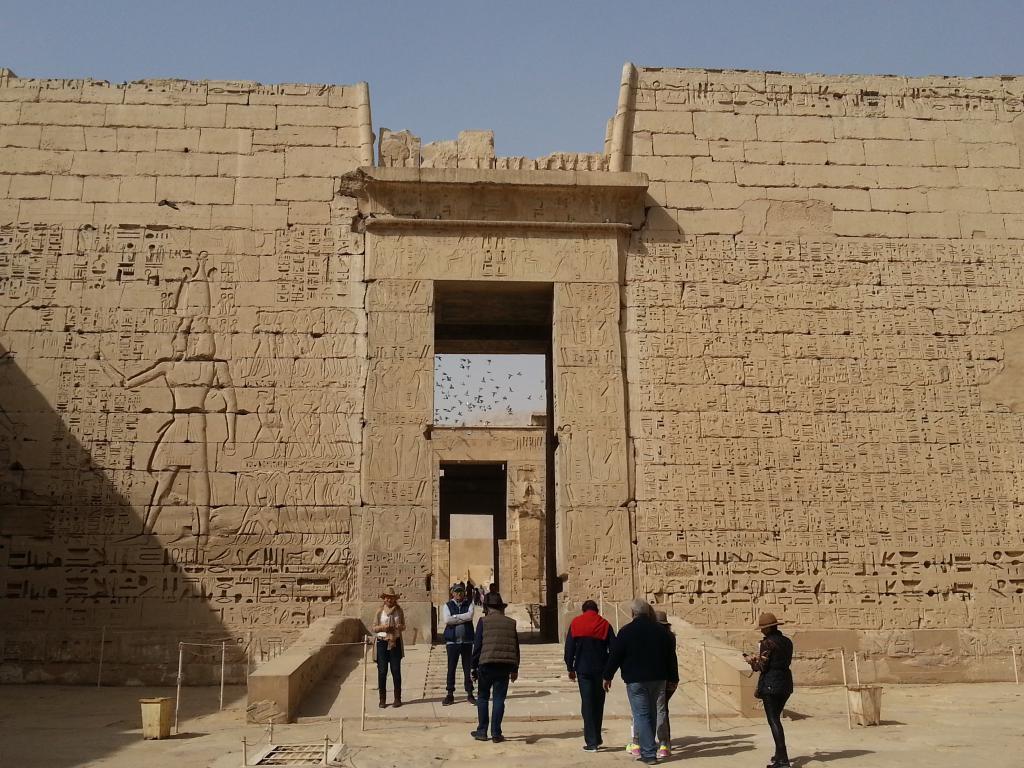
The entrance gates of Medinet habu temple 哈布陵庙入口大门 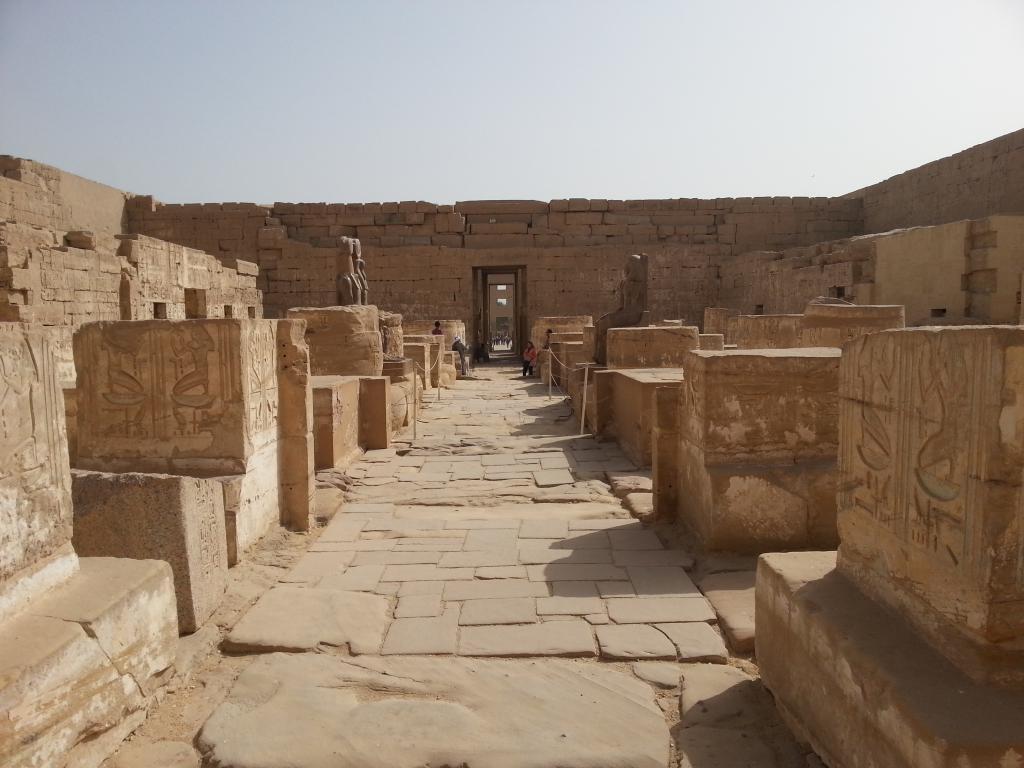
Medinet Habu Temple, ancient temple dedicated to Amun 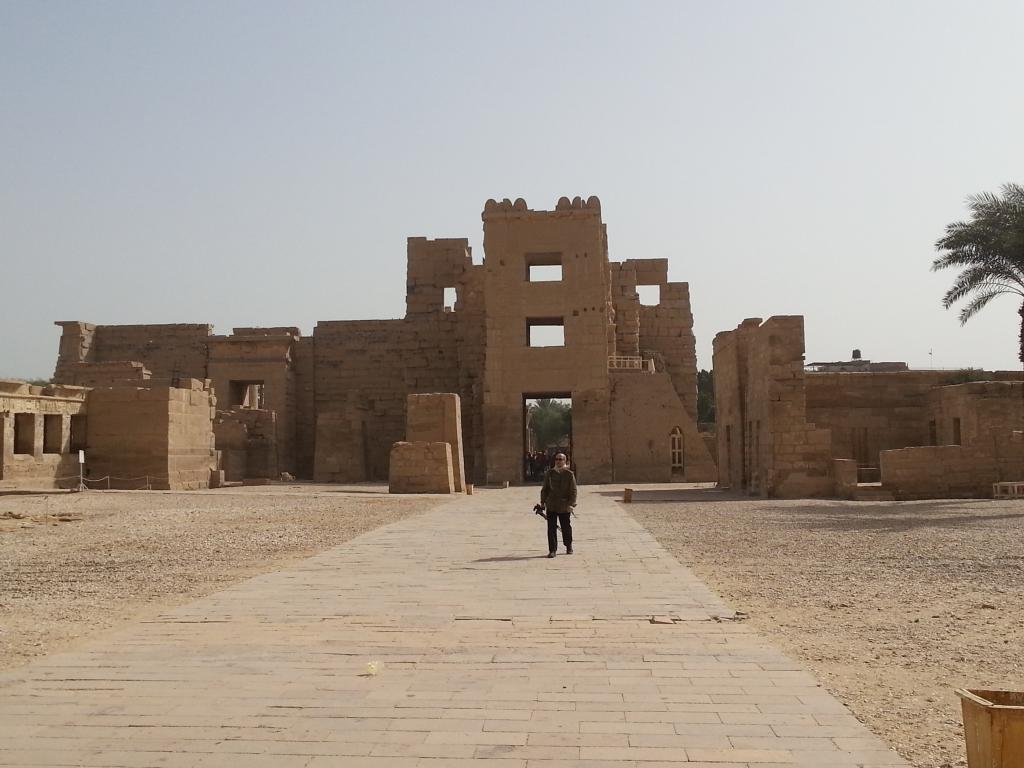
Tower gate entrance of Medinet Habu 哈布古城塔门 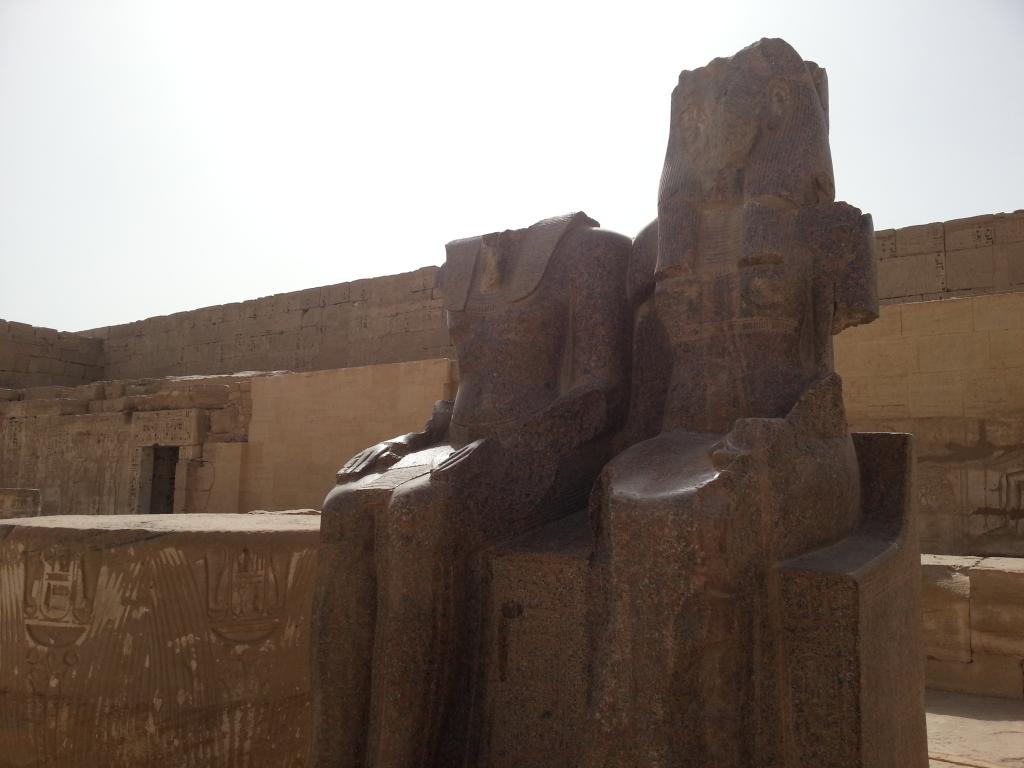
Third hypostyle hall, statue of Ramses with Maat and Thoth, goddess and god in ancient Egypt 哈布陵庙的拉美西斯和神雕像 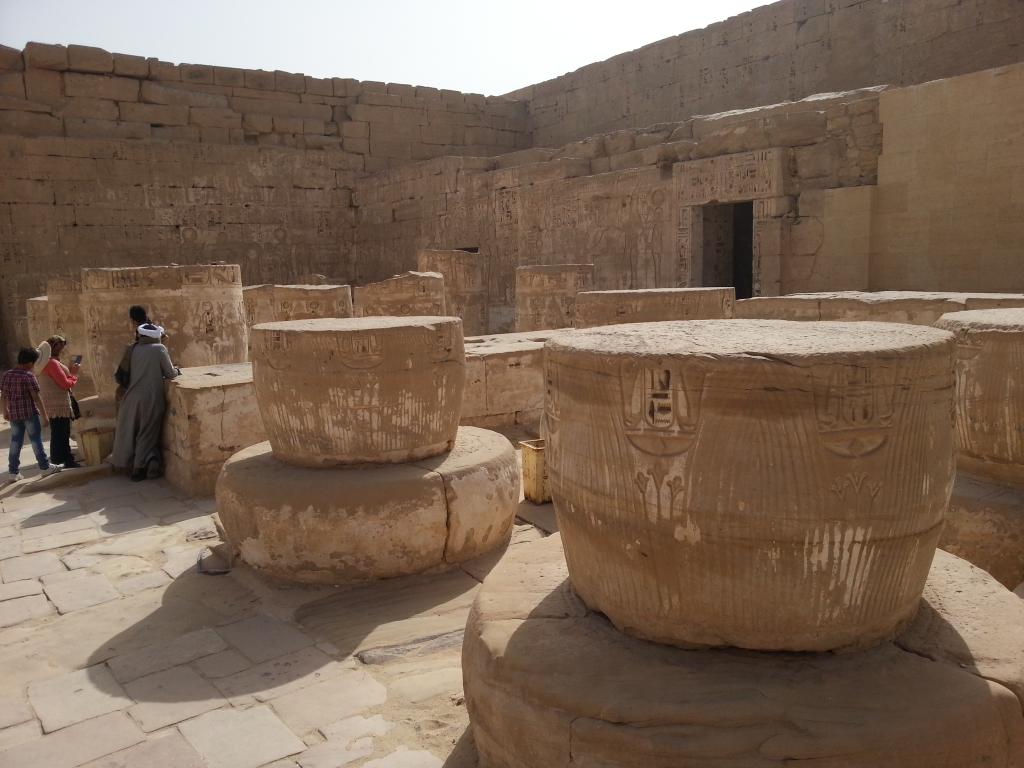
Columns remains in the Hypostyle Hall of Medinet Habu 哈布城陵庙残断石柱 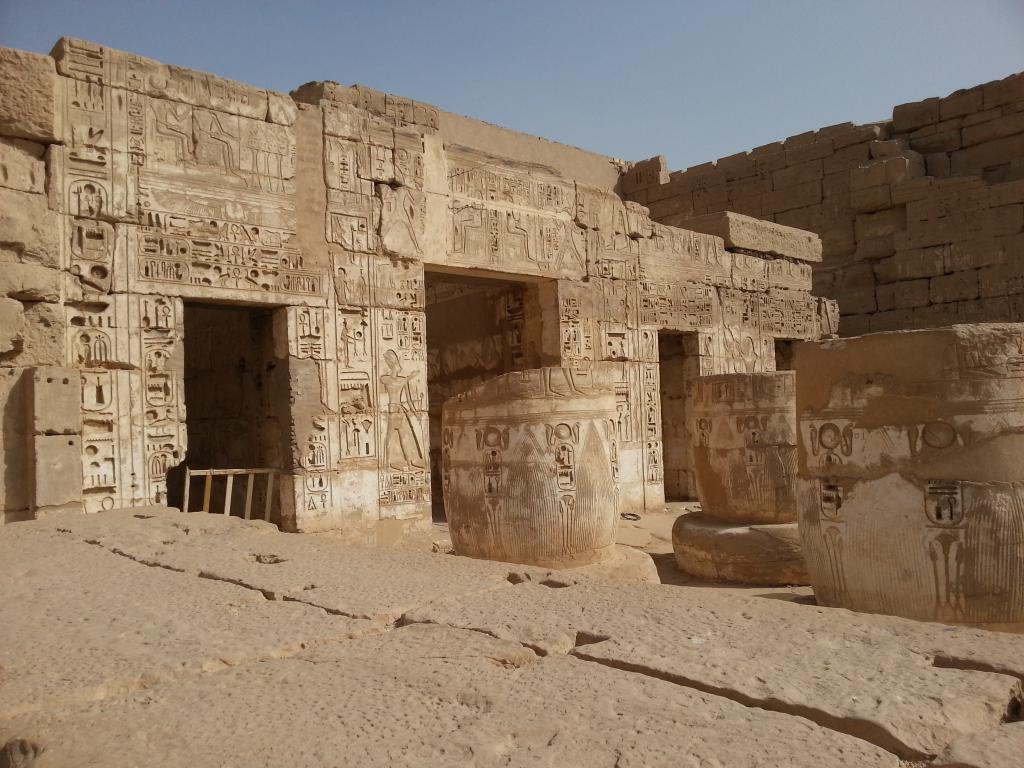
Columns remains in the Hypostyle Hall of Medinet Habu 哈布城陵庙残断石柱 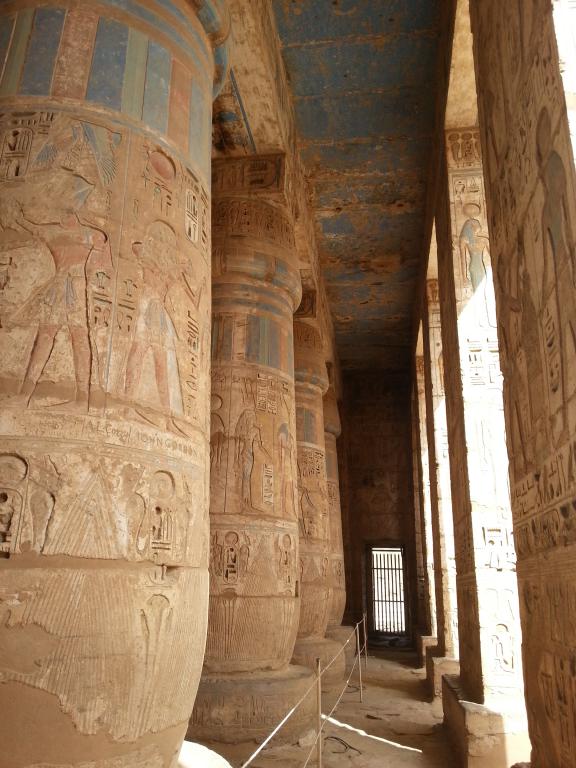
Narrow corridor between two rows of columns with decoration in the peristyle hall of the Medinet Habu temple 哈布陵庙两排布满柱画大石柱 
Big columns in the peristyle courtyard of Medinet Habu 哈布陵庙庭院大石柱 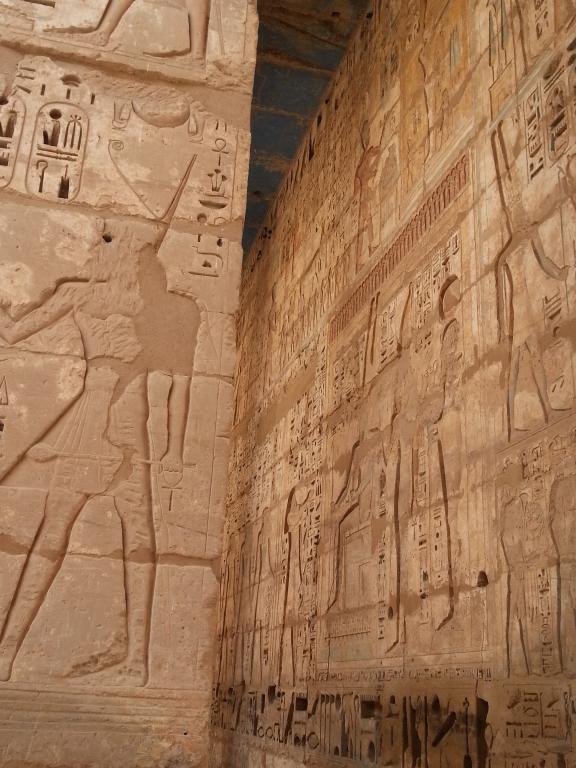
Reliefs on the walls of Medinet Habu 哈布陵庙墙体浮雕 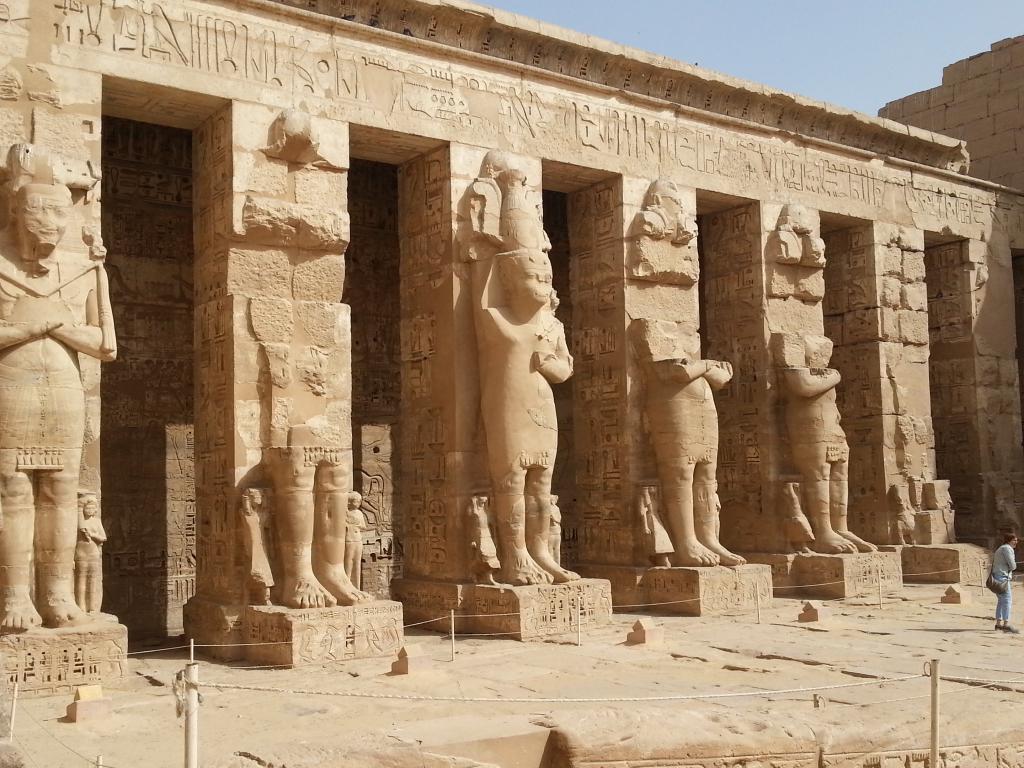
Ramessid columns in the peristyle court of temple of Ramesses III of Medinet Habu 哈布陵庙庭院的雕像石柱 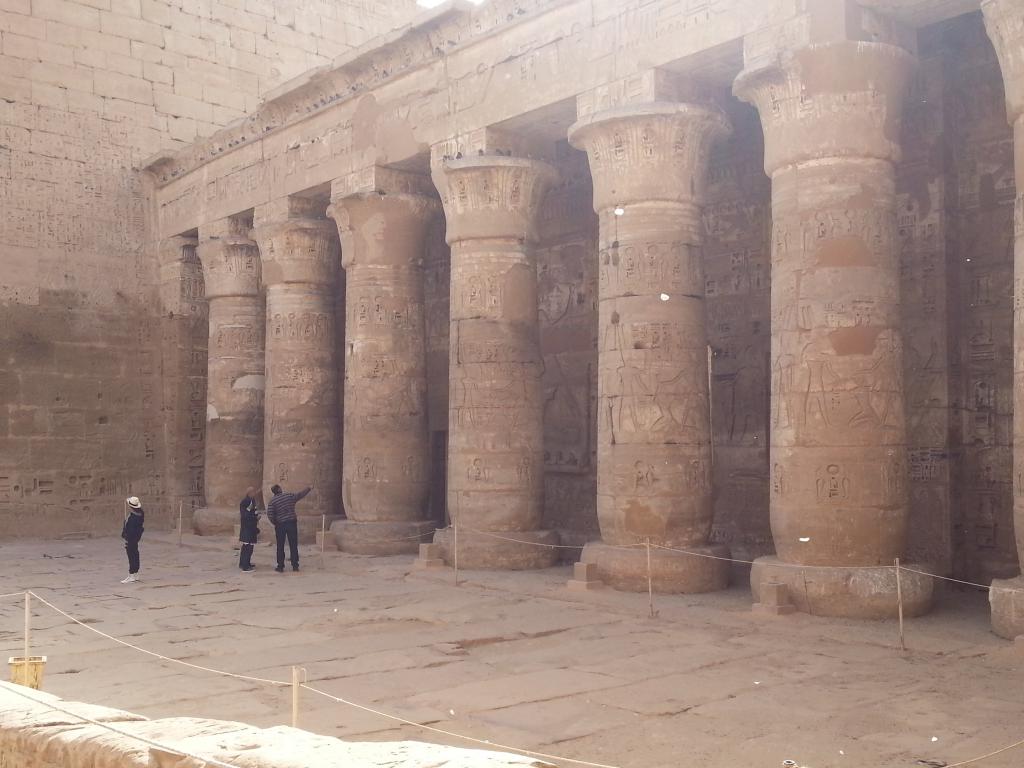
Giant pillars in Medinet Habu temple 哈布陵庙庭院的大石柱 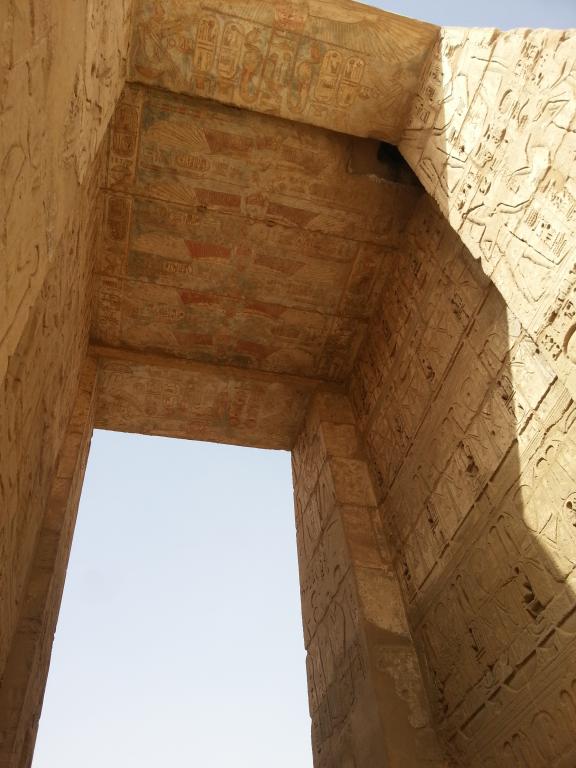
Ceiling painting, Medinet Habu 哈布陵庙天花板壁画 
Migdol gate leads into the temple complex and through more pylons behind 哈布陵庙前门和后面的护门 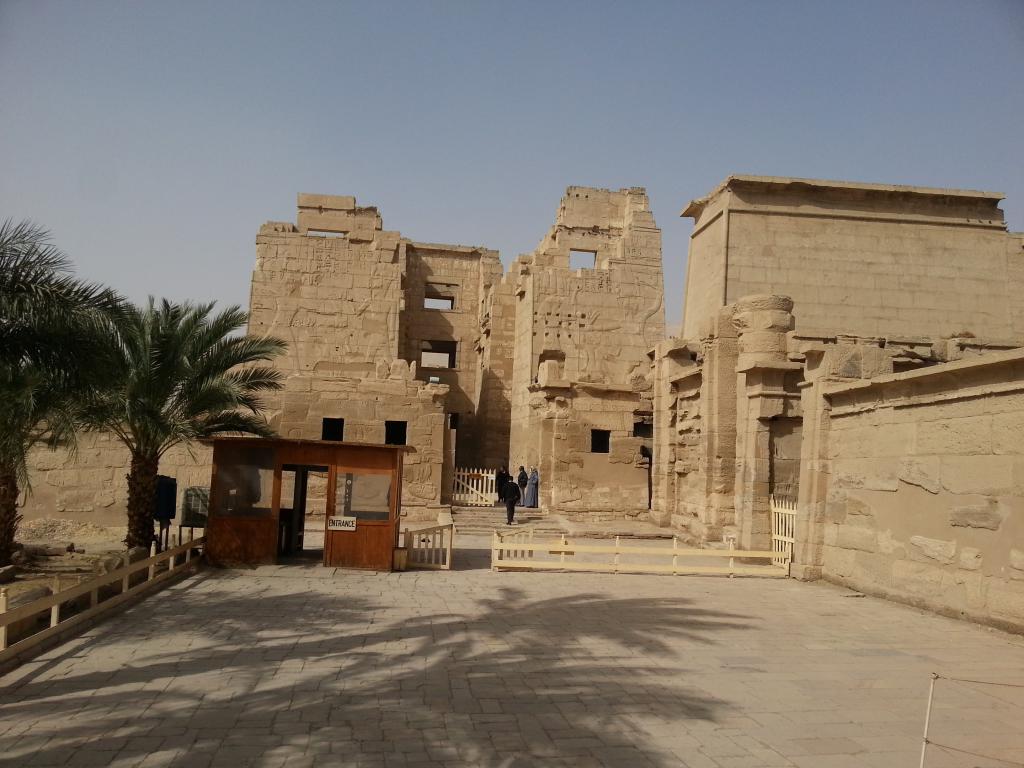
Migdol entrance to Medinet Habu 哈布陵庙前大门
We then drove toward another sight. On the way, just next to the open road, sat two massive statues. There was no building, no enclosure, just two forlorn figures sitting idly next to the main road. When I was told to get down the car and have a look, I thought they were scrap metal sculptures. These were the famous Colossi of Menon. I loved the way they showcased their history, not in a showcase, but in the most natural and ancient setting.
之后,又到另一景点偿另一道菜;途中公路旁坐着两座庞然大物。驾驶员也没隆重介绍,我起先还以为是烂铁雕像,蛮像两只科幻机械人;走近抬头一看,有点像古老埃及雕像,做得端正, 有点面目全非,看不到表情,但也很惊叹,这就是闻名的曼儂巨像,阿蒙霍特普三世法老王雕像。周围也那么原始,沙尘黄土,就几颗棕树陪衬,这两位就这样一坐坐了三千多年,万古流芳。
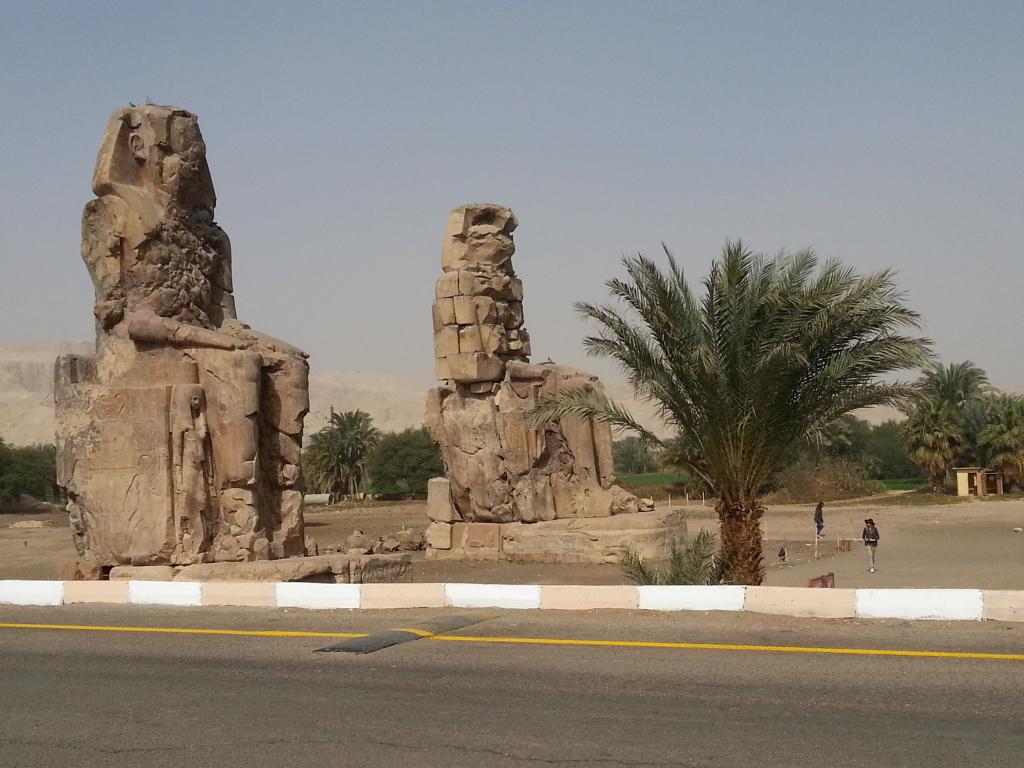
Colossi of Memnon, pair of huge Egyptian figures, the only remains of the ancient temple of King Amenhotep III 曼儂巨像, 两座巨大的埃及雕像,阿蒙霍特普三世国王古庙的唯一遗迹 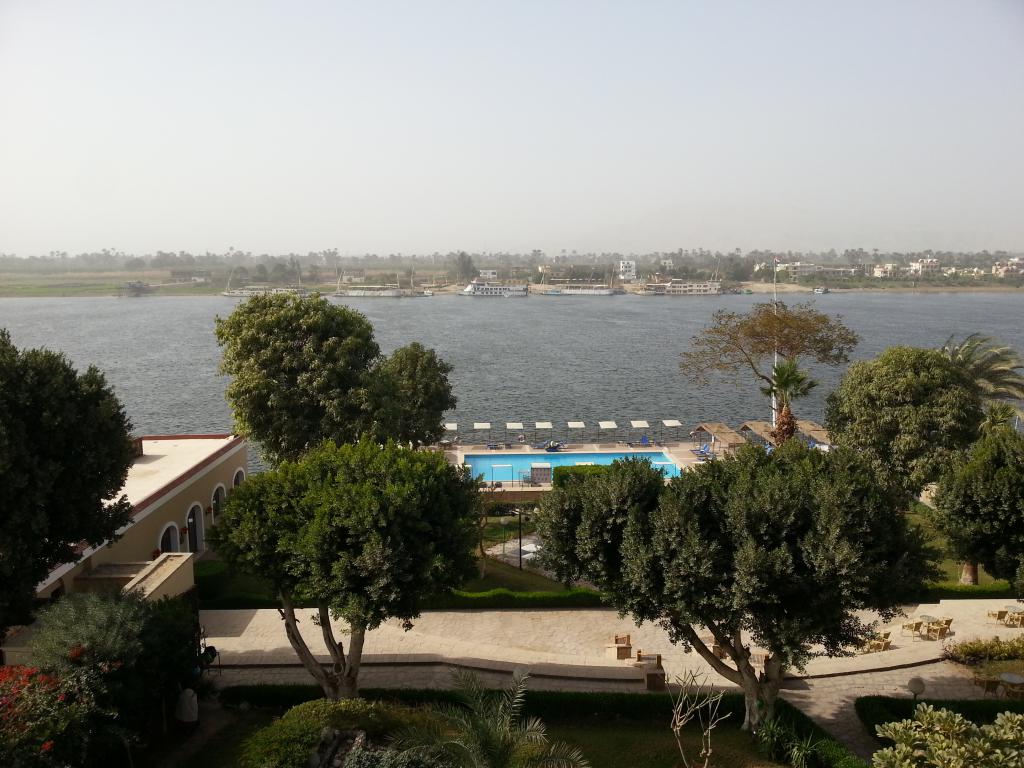
Nile River at Luxor 卢克索的尼罗河段